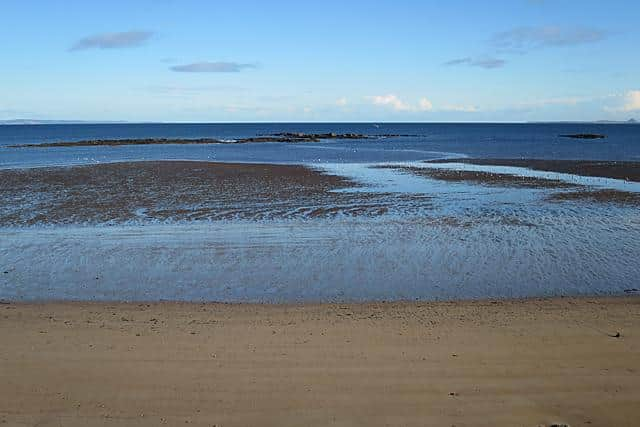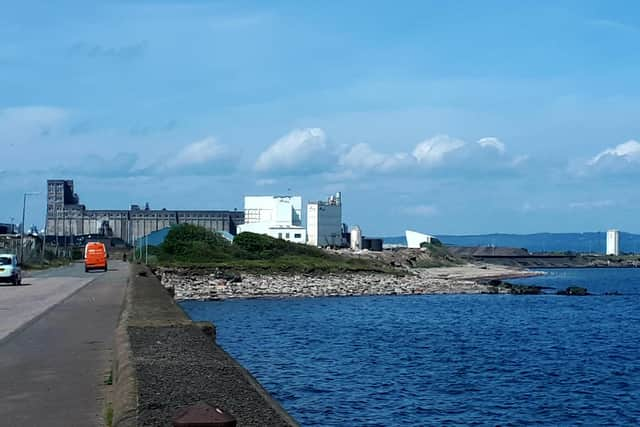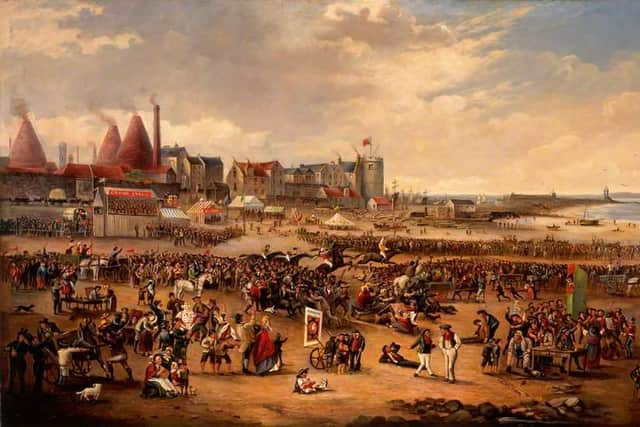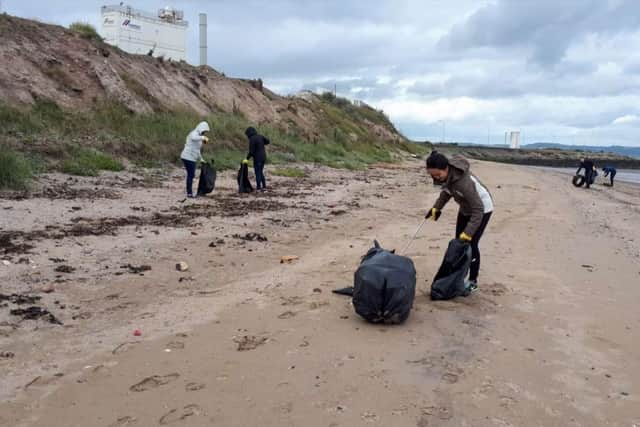Leith's hidden beach and why you can never go there
and live on Freeview channel 276
Once vast enough to rival Portobello and Cramond, Leith Sands all but vanished during the creation of what is today Scotland's largest enclosed deep water port.
More than 150 years of extensive dock building and land reclamation have whittled the huge sand, dune and shingle filled coastline down to just two short strips of beach.
Advertisement
Hide AdAdvertisement
Hide AdOne of these beaches, the neglected and polluted East Leith Sands, previously accessed via the deceptively pleasant-sounding Marine Esplanade next to Seafield sewage works, has recently been fenced off by estate owners Forth Ports due to public safety fears and to prevent fly tipping and vandalism.
Located at the tip of Leith Docks' eastern breakwater, the second un-named stretch of sand is even more isolated.
Take a step back into the annals of history, however, and Leith Sands was infinitely more prominent.
Horse racing, glass-making, duels and pirate executions
For centuries thousands flocked to Leith Sands in the summer to watch the annual Leith Races, the sands being sufficiently flat and spacious enough to host what was then Scotland's biggest horse racing event.


Advertisement
Hide AdAdvertisement
Hide AdFamous throughout the land from the Restoration right up to the early 19th century, the Leith Races were humorously immortalised in poem by Robert Fergusson, who wrote of drunken punters "drowning themsel's in debt".
The sands boosted the local economy in other ways too. In 1747 Leith became a centre of glass bottle production thanks to its sands, a large glass works opening on what is now Salamander Street. Remains of the glass works were in the process of being uncovered by archaeologists before the coronavirus lockdown began.
Leith Sands witnessed many scores settled, becoming the chosen site of many an armed duel in the Georgian era, while, on a more macabre note, the sands were also used as a place of execution for pirates, who were sentenced to death by hanging within the flood-mark. The grim practice continued until 1822.


Vanishing sands
While Copacabana-sized swathes of the port’s foreshore were lost in the construction of Albert Dock, Edinburgh Dock, Imperial Dock plus railway lines to serve them in the late 19th century, much of Leith Sands could still be walked at low tide until the late 1960s, when more land was reclaimed, the docks extended, and the old harbour transformed into a deep water port.
Advertisement
Hide AdAdvertisement
Hide AdSimilarly, a mile west of Leith Docks at Annfield near Newhaven, further land reclamation and industrial developments saw what remained of North Leith Sands disappear too.
The ever-hungry docklands swallowed all but two stretches of beach, neither longer than a few hundred metres.


And the more accessible of the two, East Leith Sands, was never going to appear on any sixties holiday brochures, not least for the presence of two sewage pipes that ran directly under the beach itself, emptying liquid waste into the nearby waters.
‘Mess-planade’
While it has been generations since the beach was pristine enough for walking your dog, let alone sunbathing or building sand castles, the public, or at least those who knew of its existence, could access East Leith Sands via a short coastal path leading from a gap in the sea wall at Marine Esplanade.
Advertisement
Hide AdAdvertisement
Hide AdSituated slightly north of a concrete plant and practically hidden to all but passing boats and ships, the beach was as isolated as they come and inevitably became a magnet for fly tippers - a problem that has plagued the vacant land around Marine Esplanade for decades.
Environmental campaign group Leithers Don't Litter spearheaded a series of clean-ups around Marine Esplanade and East Leith Sands three years ago.
Dubbing the area ‘Mess-planade’, Zsuzsa Farrell, founder of Leithers Don't Litter, said everything from broken fridges and safes to old sofas and cars had been discarded at the secluded site.


She commented: "Leith Sands and Marine Esplanade, or rather 'Mess-planade', as we like to call it, have been industrial scale fly tipping hotspots for years.
Advertisement
Hide AdAdvertisement
Hide Ad"We organised three community clean-ups there. We found abandoned cars pushed into the sea, safes dumped on the beach, dozens of old mattresses and over a hundred car tyres."
Following the clean-up efforts, which were aided by members of the public and local Labour councillor Gordon Munro, Forth Ports, who own the land around East Leith Sands, took the decision to shut off access to the almost forgotten beach permanently.
David Webster, Senior Port Manager at Forth Ports Ltd, explained the estate owners had little choice but to erect a fence at Marine Esplanade's sea wall as a public safety measure and to prevent further incidents of fly tipping and vandalism.
He said: “Safety is our number one priority and following a safety review of the Port of Leith estate, a new fence was erected last year along the sea wall.
Advertisement
Hide AdAdvertisement
Hide Ad"It was identified that there is a dangerous drop when the tide is out and also the area is prone to significant amounts of fly tipping and vandalism.
"The new fence replaces a fence that was previously there and also acts as the boundary of the Port of Leith.”
Zsuzsa Farrell would like to see East Leith Sands and the surrounding area restored as a natural beauty spot.
She added: "I’m sure most people love and respect our beaches and it’s a careless minority that ruins it for everyone.
Advertisement
Hide AdAdvertisement
Hide Ad"It’s a shame Forth Ports felt the only way to protect the area was to fence it off. With a little investment it could be turned into a safe and lovely beach walk."
First reported in the Edinburgh Evening News May 21, 2020.
A message from the Editor:
Thank you for reading this article. We're more reliant on your support than ever as the shift in consumer habits brought about by Coronavirus impacts our advertisers.
If you haven't already, please consider supporting our trusted, fact-checked journalism by taking out a digital subscription.
Comment Guidelines
National World encourages reader discussion on our stories. User feedback, insights and back-and-forth exchanges add a rich layer of context to reporting. Please review our Community Guidelines before commenting.
